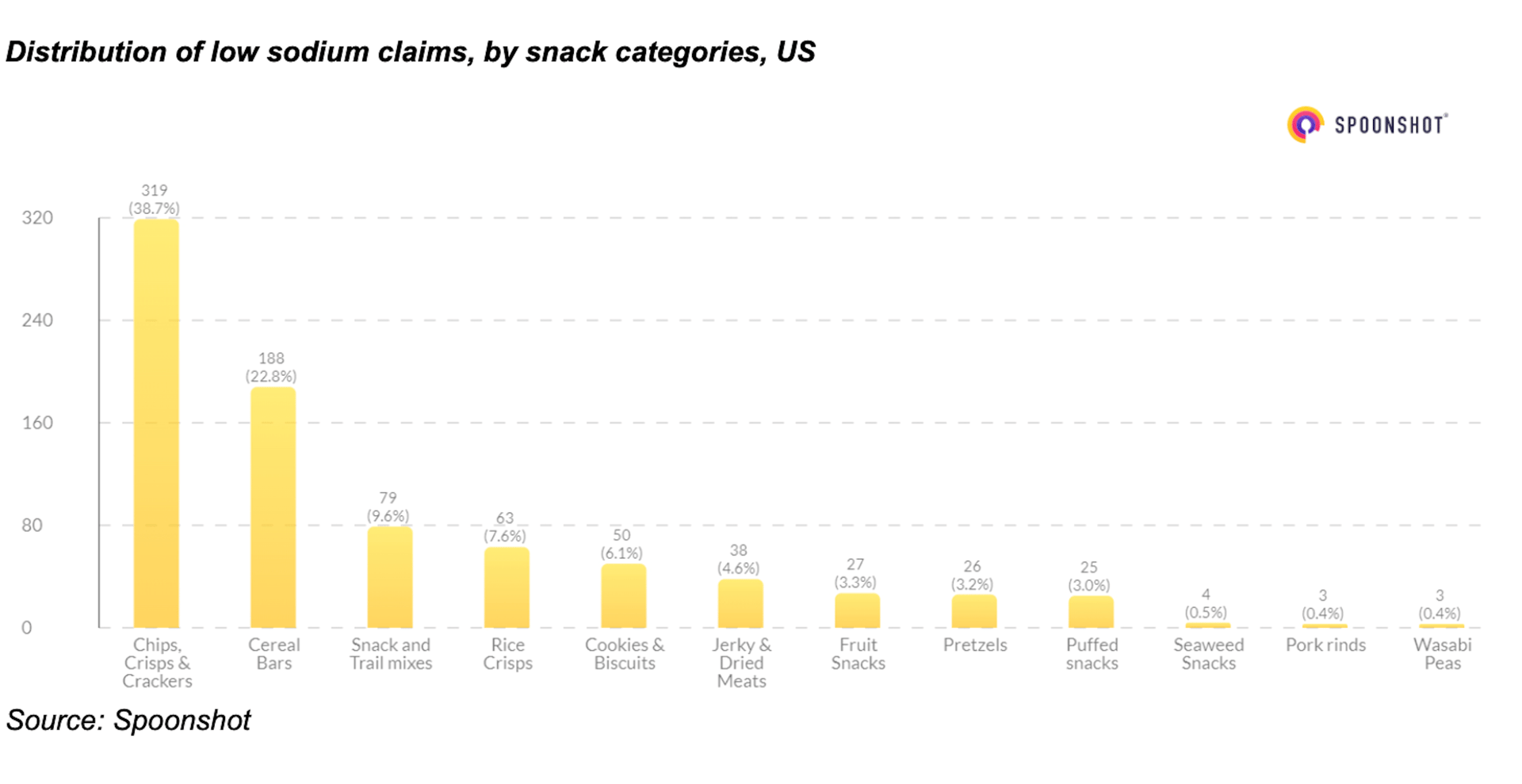Salt
ingredients
The BOTTOM LINE
- Sea salt as a healthier choice
- Pressure from FDA to lower sodium
- Consumers interested in salt reduction
A healthier choice
Consumers aim to reduce sodium in their snack and bakery products.
Joyce Friedberg, Contributing Writer
Salt is one of the five basic taste sensations, which include salt, sour, sweet, bitter, and umami. Salt can also affect other flavors such as sweet and bitter. In small amounts, salt will intensify sweetness—for example, it can be added to candies like caramel. Salt can also counteract bitter flavors in food and help release certain molecules in food, bringing out the flavors of the other ingredients. Salt is best known as one of the most used flavoring agents but also plays other functions in snack and bakery products beyond just flavor.

SPONSORED BY
For example, salt plays a role in creating texture in food. When making yeast bread, the amount of salt affects the rate of fermentation and gluten formation, which affects the final texture of the bread. Salt is also a color enhancer, since it increases caramelization in a bread crust and helps create the golden color.
Sea salt
Sea salt continues to be perceived as a healthier choice as compared to other salts, and brands are leveraging its appeal with “made with sea salt” claims on the product. SaltWorks has a wide array of salt options from single sourced, high purity Pure Ocean ingredient sea salt to Ancient Ocean pink Himalayan salt to Pacific Blue flake salt.

Courtesy of SaltWorks® Inc
“Pacific Blue mini and micro flakes are the perfect size for application on tortilla chips, shelled edamame, crackers, nut mixes, pretzels, popcorn, and any snack food imaginable. Larger Pacific Blue kosher and macro flakes make a beautiful finishing touch on mouthwatering [treats] like fresh chocolate chip cookies and luscious homemade truffles. For adventurous palates and gourmet snacks and sweets, we offer delectable varieties like our naturally cold smoked sea salt or flavored sea salt infused with real espresso, black truffle, lemon, lime or habanero,” shares Sara Long, marketing copywriter, SaltWorks, Woodinville, WA.
Sodium reduction tools
Janice Johnson, PhD., food science advisor, Cargill, says, “we’re seeing continued pressure from the U.S. Food & Drug Administration and others to lower the sodium content of processed, packaged, and prepared foods. According to the agency, Americans consume on average 3,400 milligrams of sodium per day, nearly 50% more than the 2,300 milligrams limit recommended by federal guidelines. To encourage sodium reduction, the FDA has established voluntary sodium targets.”
Ranjana Sundaresan, lead research analyst, Spoonshot, shares the results from a recent analysis on salt and sodium: “Our data shows growing interest in salt reduction in the U.S. from consumers and businesses over 12 months to July 2022, and this interest is projected to grow in the coming 12 months as well. However, there has been an overall drop compared to 2016. This is likely due to a greater focus on sugar reductions, the perception that low salt products may have diminished taste, and also a lack of awareness of the importance of reducing salt consumption.”
Spoonshot’s analysis shows only 2% of the snack launches carry low salt/sodium claims with chips, crisps, and crackers categories having the highest share of these claims.

Courtesy of Spoonshot
Sundaresan shares a few of the specific ways that many of these snack brands highlight salt reduction:
- Using messaging linked to lower salt content, such as “lightly salted” or “low sodium”
- Highlighting the exact amount of sodium reduction
- Some products also call out being unsalted or having no salt
- The use of herbs and spices to increase flavor and reduce the dependence on salt.
“This is likely due to a greater focus on sugar reductions, the perception that low salt products may have diminished taste, and also a lack of awareness of the importance of reducing salt consumption.”
— Ranjana Sundaresan, lead research analyst, Spoonshot

Within the baked goods category, only 1% of products launched have a low salt/sodium claim, with breads having the leading share of products with this claim. However, baked goods, in general, are not likely to focus on salt reduction as much as sugar reduction because salt use here is far lower than in snacks, explains Sundaresan.
There are multiple approaches to tackle sodium reduction. Cargill advises customers to start any sodium reduction project by first pulling out salt to a level where there is no impact to taste or texture. From there, the company recommends breaking down the formula and determining all the sources of sodium. Clearly salt is a large contributor of sodium, but ingredients such as baking soda (i.e. sodium bicarbonate) can also be a significant source shares Johnson.
Sundaresan notes a number of strategies have been emerging in the salt reduction space:
- Salt reduction: reformulation of existing products or making new products with lower quantities of salt
- Salt replacement:
- Using potassium salts. However, these can be bitter, so they are often combined with some amount of flavor modification or bitter blockers, which can help mask the bitterness
- For baking applications, salt replacers and alternative chemical leavening solutions can offer ways to reduce salt use. For example, potassium chloride can mimic many of the functional properties of sodium chloride
Flavor modification:
- Using umami substances like MSG, yeast extracts, and mushroom derivatives to enhance flavor and increase the perception of saltiness
- Mycelium-based bitter blockers—mycelium is the base root structure that produce mushrooms, and it has become very popular due to its potential in the meat alternative space. However, it can also be used to create other compounds like bitterness blockers that can address the bitter aftertaste of both sugar and salt replacers
Physical modification
- Some companies have been focusing on modifying the structure of salt to aid reduction, such as reducing the size of the salt particle to just a few microns. This increases the surface area of the particle, makes it easier to dissolve on the tongue, and it coats foods more evenly. This is especially useful for snacks like chips, crackers, and nuts
- Within the bakery space, encapsulated salts could enhance saltiness, while reducing the quantity needed.

Courtesy of Cargill
Cargill’s Potassium Pro Potassium Salt can help snack manufacturers achieve up to 50% sodium reduction in certain applications and is the most similar ingredient to salt in terms of taste, texture, and functionality.
“Potassium salt can help control yeast fermentation, aid in gluten formation, help control microbial growth, extend shelf life and contribute to flavor, texture, and color,” notes Johnson. Cargill offers potassium salt in two different particle sizes. “Potassium Pro Ultra Fine Potassium Chloride, is a great option for seasoning mixes or partial replacement for salt in topical applications. Its micro-sized particles help mitigate some of the bitter/metallic notes typically associated with potassium chloride, enabling higher levels of sodium replacement. Our larger-sized Potassium Pro Potassium Chloride works well when added to food applications where is dissolves and distributes evenly.”
Another tool for topical applications such as crackers and chips is the company’s Alberger Flake Salt. “These unique crystals offer a large surface area and low bulk density, resulting in superior adherence, blendability, and solubility compared to regular cube-shaped granulated salt. When used topically, this unique structure means less salt is needed to achieve the same salty flavor. For example, in chips with a salty topping, switching to Alberger salt, with its unique crystalline structure, can allow brands to reduce the sodium in the topping by up to 20%,” explains Johnson.
Another natural option for sodium reduction is SaltWorks Pacific Blue flakes. The flake salts are light, featherlike grains with more surface area and less volume than the average grain of salt. This structure dissolves immediately in the mouth, so less salt is needed for the same savory taste, explains Long.
Another approach used for sodium replacement/sodium reduction is using umami-like ingredients such as yeast or yeast extract to help enhance or modify the flavor and increase the salty perception.


